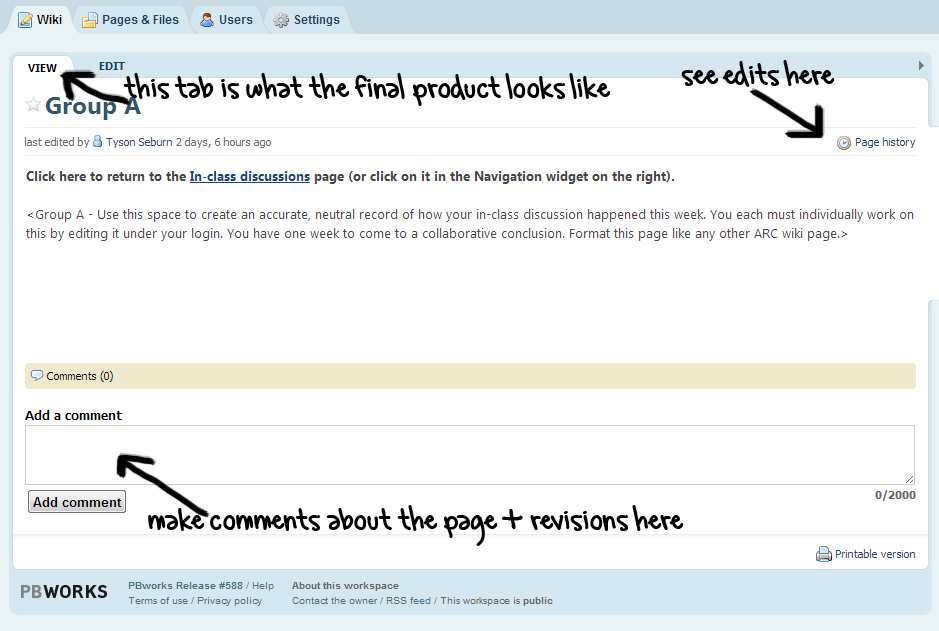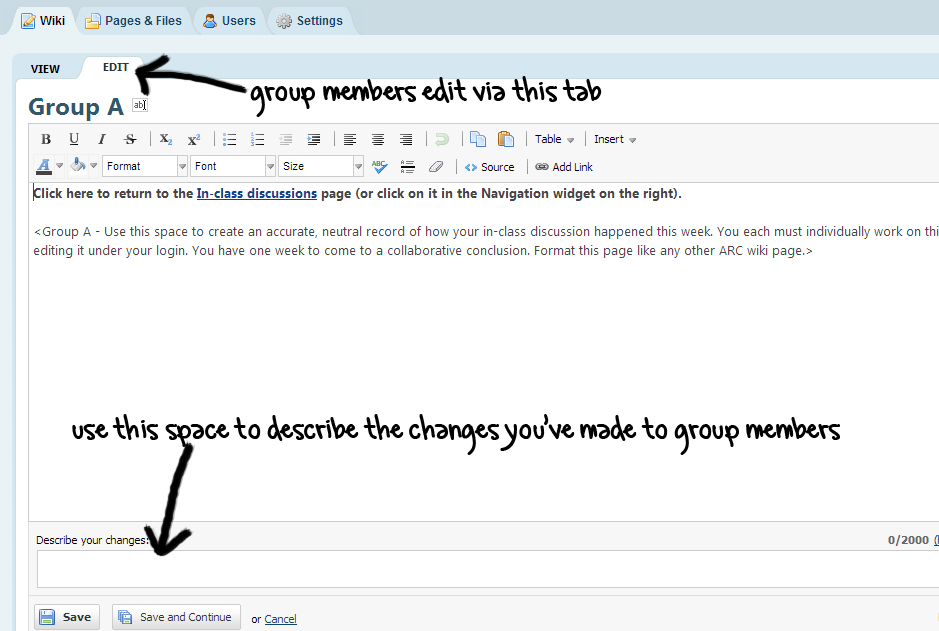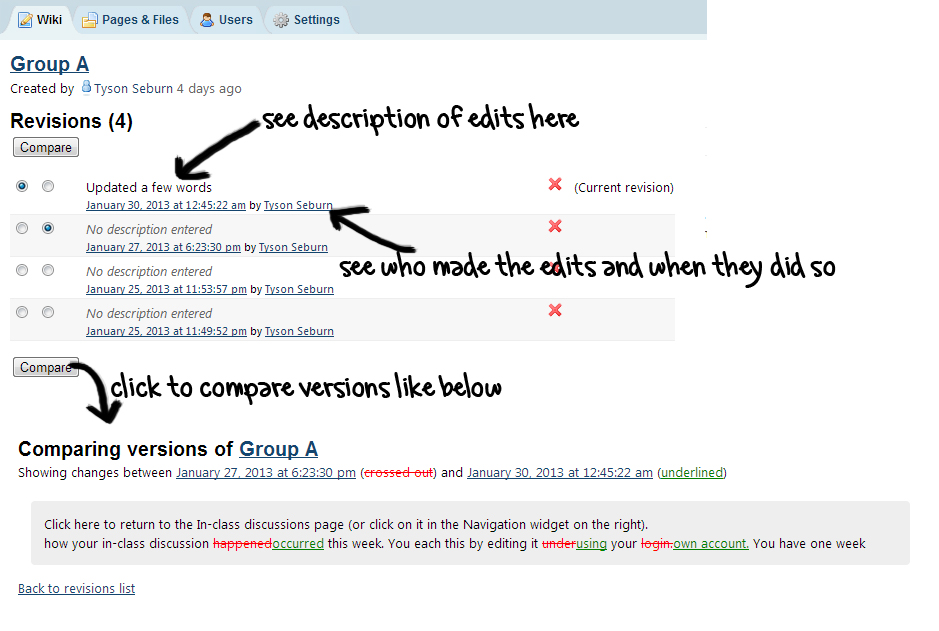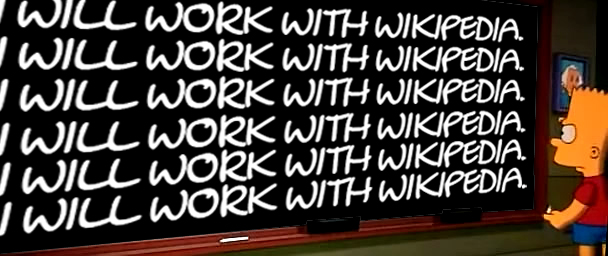The reasonable use of Wikipedia is an ongoing discussion in my EAP program, exemplifying the broader discussion happening throughout academia. I say “reasonable use” because it is blatantly obvious that when one wants information quickly, Wikipedia provides it. For this reason, I’ve been giving some thought about how to work with instead of against it.
About a year ago, I read a post by Noah Geisel on TeachPaperless entitled “The Wikipedia Dilemma”. Geisel argues prohibiting Wikipedia from our courses entirely being ultimately detrimental to students. Doing so does not further a pinnacle of academic learning: seeking, evaluating, and sythesising information for an informed argument. Good point, I thought.
More recently, I used an article entitled “What to Do with Wikipedia” by Trinity Western College associate librarian, William Badke, for an ARC text. In it, Badke discusses the controversy Wikipedia causes among academics and the resulting confusion for students who see it as common sense resource. “Rather than throwing rocks at it,” he suggests, “the academy has a unique opportunity to engage Wikipedia in a way that marries the digital generation with the academic enterprise.” Good point, I thought.
Teaching how to evaluate sources to a generation who never knew life without instant access to information is a nebulous, but fascinating task as an EAP teacher. We all have our favourite articles that show extremes of bias, texts that seem plausible but have hidden motivations, and activities that compare topically-related websites, one reliable and one not. What they rarely do is connect to Wikipedia itself. Since it is the #1 source used, it makes sense to help students gain insight into how the information gets there. As a result, I’ve put together a wiki activity to experientially introduce students to the very basics of crowd-sourced knowledge.
Objective: Students create a wiki page detailing events as agreed upon by consensus.
- Set up a wiki, for example on Pbworks. Make accounts for all students. It’s free and requires no self-hosting services. (If you can host it yourself, check out MediaWiki, the platform that powers Wikipedia.) For student accounts, it’s easy: just ‘Add Users’ and choose the ‘class list’ option. You only need to enter names so it generates unique logins and passwords for each student on a printout that you can give to them.
- Form group pages for your students on the wiki site. If you have a class of more than 6 students, it can be unwieldly if they are not in groups. Make a group page on the wiki site for each group. I’ve set them up for my students here, as an example.
- Choose an event that students attend as the content for the wiki site, but don’t tell them. This could be a lecture, an outside event or even your own classes that week. The key is that it must be something the students experience first-hand. It may be helpful in the long run for extension activities to assign different events for each group.
- After the event, groups create their wiki pages about the event.
a. Give students their wiki site logins and passwords.
b. Task each group to create content on their wiki page that details what happened at the event in #3 accurately and in detail for someone who was not there. To do this, they each should log on individually to give input as they remember it. Group members need to negotiate the final product through the wiki site itself. Through this negotiation, there should ultimately be just one account of events per group.
Features of the wiki: Students can use the Comments section of the page to discuss revisions made. Each edit to the page is saved in the “pages history”, logging what the edit is, when it happened and who did it. Pages can be reverted to previous versions easily should an edit be rejected by the group. This process may take several days as it may be a challenge to come to an agreement about what actually happened. It might be interesting just to let students discover these features themselves. See figures for visual examples.



Through this series of edits and revisions, students will be involved in an example of the process by which information becomes part of a Wikipedia page: initial page, edits and revisions by others, acceptance or rejection of revisions, and more edits and revisions, each (hopefully) improving the neutrality and reliability of the previous version.
Extensions to the activity
- Groups investigate other group pages. Have them check the “pages history” to see what contributions were made by group members. Do the revisions show the majority of contribution from one member compared to an even split among them? What has been discussed in the comments pages, if anything? Are the events described neutrally or are there obvious opinions still included?
- Make one central event page. Repeat the process with all groups editing a central event page based on what individual group pages suggest.
- Add citations to the pages. Challenge students to add citations that back up any information on their page. This works if the event was public or there is information online about it that can be linked to.
- Reuse the wiki with another class. If you have new classes, repeat this exercise, but this time there is an existing account of the events on the wiki. New groups use it as a base to improve the record of events.
This is one small example of introducing students to the idea of collaborative writing, revising to form a group consensus and gaining insight into the reliability of Wikipedia entries.
References
Geisel, N. (2011) The Wikipedia Dilemma, TeachPaperless. [blog] posted November 24, 2011. Available at http://teachpaperless.blogspot.ca/2011/11/wikipedia-dilemma.html
Badke, W. (2008) “What to do with Wikipedia.” Online 32, no. 2 (2008): 48-50. Available at http://www.infotoday.com/online/mar08/Badke.shtml


I like your idea. I think it might be interesting to make the groups over multiple sections. I teach five sections of middle school students. This could be a nice extension to other activities I work on with my students.
That would be a great way to go about it, Ann. I only teach one section of a 26-week period, myself. However, I do plan to use it with the next year’s students as well. After 5 years, it’s going to be a very different exercise. 🙂
Interesting way for students to learn how to use wikis. I also believe teachers should be trained on how to use wikis especially Wikipedia for writing essays/research ( http://blog.apastyle.org/apastyle/2009/10/how-to-cite-wikipedia-in-apa-style.html). Most complaints I’ve heard from teachers is that students copy-paste or ” poach “common information” from websites” and never acknowledge who the author is or at least refer to that one page they use in Wikipedia to write their essays. For some reason, teachers tend to believe that students should know how to do this out the blue -without training! and it is not like so, I reckon…They need to be taught what plagiarism is, what they should do with info/content that doesn’t seem to have an author among other things.
Absolutely RE teaching students how to cite different types of sources. However, as Wikipedia is a tertiary source, like any encyclopedia, one wouldn’t cite information from it as it is really there for background information, common to anyone in that field. Of course, this is changing as Wikipedia entries evolve, but really… not yet. I’d definitely say it belongs on bibliographies of any sort though.
Agreed…That’s why I shared the link on APA & Wikipedia…”It is a great way to get an overview of a topic that might be new to you. And, because many Wikipedia entries contain thorough citations, they can be good starting points to find the original source materials you do want to use…”
Yes, he put it succinctly, though I’d argue many of the citations could still use some improvement.
That’s for sure! It’d be a good source -Wikipedia- then to teach our students what’s a right citation; what’s not a good one…
Damn Tyson, you are just always so full of great ideas. I’m so glad you aren’t afraid to share them!
Fear of sharing ideas? Blasted, have I missed out on the possessive train? My ideas aren’t really mine. They’re all ours. 🙂
Impressive investment of time, Tyson. Sounds valuable. What seems central to me, from an academic practice learning perspective, is the issue of the quality and reliability of information. I am also one who now encourages Wikipedia as a potential first go-to, but only to identify areas for personal research. It would make interesting work to have students follow up ‘the facts’ and establish to what extent the crowdsourced entry is ‘accurate’. They might also then update the entry, add the missing references, etc.
The increasing use of academic blogging, etc is blurring the boundaries of what constitutes ‘quality’ in writing, of course, and I think we are soon going to have to change our tune away from saying ‘peer reviewed journals only’. We need to work with students to establish what the criteria of quality and verifiability are (particularly with regard to quantitative data, for instance) – and where attribution lies. These are interesting times and there are hard conversations to be had in ‘The Academy’ (though some are way ahead of the game, changing the rules already) about what our students should be reading, synthesising and referencing. The Remix Culture is causing a slow revolution, I think…
*Yes! RE your follow-up ideas for the wiki activity above – I think as time proceeds and the wiki gets established for ARC, more and more accuracies can be referenced.
*YES! RE academic blogging – there is quality everywhere if you know how to identify it. I do have a follow-up wiki activity that actually involves student blogs, but that’ll have to wait for now.
*Maybe… RE investment of time – honestly, it doesn’t take a whole lot to set up a wiki and then pass the majority of the work on to students.
Hi Tyson,
Just really dig this idea in general. I’m was trying to think how to play with these concepts for my students, who are sometimes true beginners, and realized that it would probably work out better for all concerned if students just engaged in this activity in their 1st language. So I’m going to take this idea for a series of lessons and share it with the Information and Media Instructor at my high school. As it is, our school suffers from a rash of Wiki-plagiarism, so this seems like a nice step to inculcate the some better habits in our students.
Kevin
When you initially mentioned you could adapt it to lower levels, I hadn’t thought of true beginners. I think doing so in L1 is a good alternative. Of course, I wonder if a wiki might be set up in some other way for English practice, like by context (shopping), function (greetings) or even letters (A, B, C, etc.). Maybe then your students could recycle lexical items or expressions useful in those situations. Could be a good way to do a bit of group collaboration and concept reinforcement. Of course, perhaps it’s not the most authentic use of a wiki, but does it have to be? Just thinking out loud here. 🙂
[…] Seburn, T. (2013) “A wiki activity to introduce insight into Wikipedia,” 4C in ELT. [blog] posted January 30, 2013. http://fourc.ca/wikipedia1/ […]